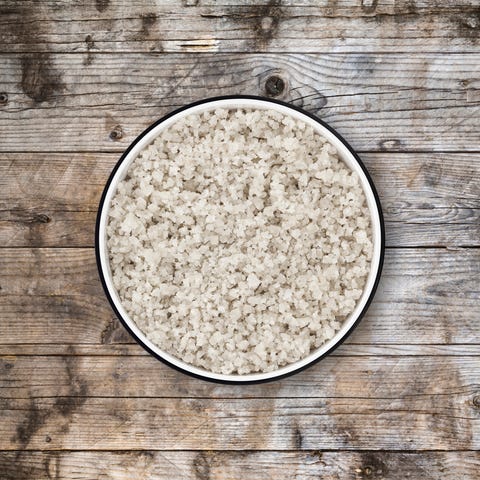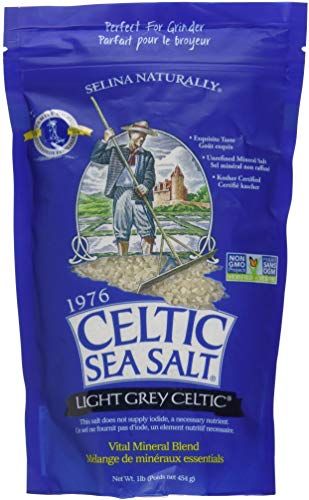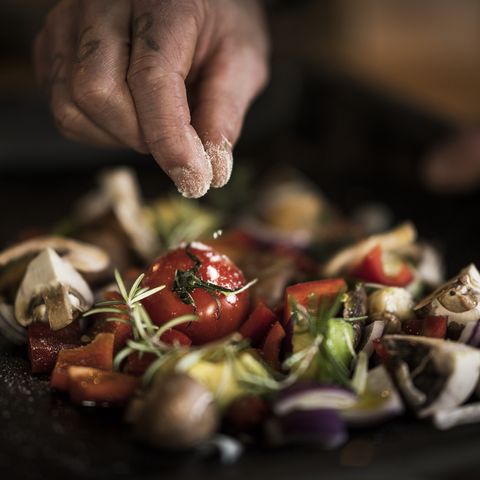Home » Diet & Food »
Grey Salt Is the Salt You Aren't Using But Should Be
Himalayan sea salt, purified red sea salt, grey salt—whatever happened to regular old table salt?
Well, gourmet salts offer cooks a range of flavors beyond just “salt.” But are any of these salts actually healthier than table salt?
Manufacturers of grey salt pull the product from clay-lined pool. The clay in these pools imbues the salt crystals with minerals such as iron, calcium, and manganese. But that’s not to say replacing table salt with grey salt will improve your health.

Dimitris66
That’s like saying orange juice is better soda because it has a ton more vitamin C.
All this said, grey salt does bring a lot to the table when it comes to cooking.

Grey salt has a texture that’s soft and flaky—not like the hard crystals of most sea salt. It also feels slightly damp to the touch. Flavor-wise, it tastes, well, salty, with a slight mineral tang.
For that reason, grey salt tastes best when scattered across simple vegetable side dishes, such as sautéed green beans, broccoli, peas, asparagus, and corn. (If you’re feeling especially wild, try some on a fresh sliced peach.)

Westend61
Grey salt also has the oomph to stand up to the bold flavors of seared steak, pork chop, or pretty much any piece of fish.
If you’re worried about your sodium intake when it comes to salting your foods, don’t be.
The easiest way to reduce salt intake is to eat less processed foods. Packaged foods, canned foods, fast food—it’s these foods that are loaded with sodium. Canned soups, for example, can have more than half a days salt in one serving.
Have that as a side to a sandwich of deli meats and you’ve just hit your days intake in one sitting. Three ounces of ham, for example, has about 1000 milligrams of sodium alone.
So stick with fresh foods. And pass the (grey) salt.
Source: Read Full Article



